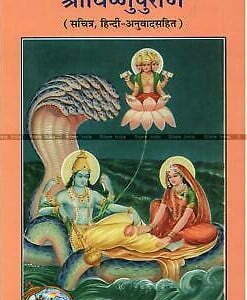Author: Maharishi Kamban
About the author:
Maharshi Kambar, also known simply as Kambar, is one of the most celebrated poets in Tamil literature. He is best known for his epic work, the Kamba Ramayanam, a Tamil rendition of the Ramayana originally composed by the sage Valmiki in Sanskrit. Kambar’s contributions to Tamil literature have earned him the title of “Kavi Chakravarti,” which means “Emperor of Poets.” His works are revered for their poetic beauty, linguistic excellence, and deep spiritual insights.
Life and Background
Historical Context:
- Kambar is believed to have lived during the 12th century CE in Tamil Nadu, India. He was born in Therazhundur, a village in the Tanjore district. His period coincided with the reign of the Chola dynasty, particularly under the patronage of King Kulothunga Chola III, who supported his literary endeavors.
Early Life and Education:
- Kambar’s early life is not extensively documented, but it is known that he received a thorough education in Tamil and Sanskrit. His mastery of both languages is evident in his works, which blend classical Tamil literary forms with influences from Sanskrit literature.
Patronage:
- Kambar enjoyed the patronage of King Kulothunga Chola III, who recognized his literary genius and supported his work. This patronage allowed Kambar to focus on his writing and compose his magnum opus, the Kamba Ramayanam.
Major Works
Kamba Ramayanam:
- Content and Structure: The Kamba Ramayanam is Kambar’s most famous work, a retelling of the Ramayana in Tamil. It is divided into six books (Kaandams): Bala Kandam, Ayodhya Kandam, Aranya Kandam, Kishkindha Kandam, Sundara Kandam, and Yuddha Kandam. Each book corresponds to a segment of the original Ramayana, recounting the life and adventures of Lord Rama.
- Language and Style: The Kamba Ramayanam is renowned for its poetic brilliance, rich metaphors, and intricate wordplay. Kambar’s use of Tamil is both classical and innovative, making the text accessible and appealing to a wide audience.
- Themes: The epic emphasizes themes of devotion (bhakti), duty (dharma), righteousness, and the triumph of good over evil. It portrays Rama as the ideal man and king, and Sita as the epitome of virtue and loyalty.
Other Works:
- Besides the Kamba Ramayanam, Kambar is credited with several other literary works, including:
- Saraswati Anthati: A devotional hymn dedicated to the goddess Saraswati.
- Erezhupathu: A collection of poems praising the virtues of the Chola kings.
- Silaiezhupathu: A series of verses in praise of a particular idol.
- Sadagopar Anthati: A devotional poem dedicated to Nammalvar, one of the twelve Alvars, Tamil poet-saints devoted to Vishnu.
Key Themes and Contributions
Devotion and Bhakti:
- Kambar’s works are deeply infused with the spirit of bhakti or devotion. His portrayal of Rama and other characters in the Ramayana reflects a profound reverence for their divine qualities and virtues.
Moral and Ethical Teachings:
- The Kamba Ramayanam, like its Sanskrit counterpart, offers moral and ethical guidance. It teaches values such as honesty, loyalty, courage, and the importance of following one’s dharma.
Cultural Adaptation:
- Kambar adapted the Ramayana to reflect Tamil culture and traditions. He incorporated local idioms, customs, and folklore, making the epic more relatable to Tamil-speaking audiences. This cultural adaptation helped to spread the story of Rama and the values it embodies throughout South India.
Influence and Legacy
Literary Impact:
- Kambar’s Kamba Ramayanam is considered a pinnacle of Tamil literature. Its poetic excellence and profound storytelling have earned it a revered place in the Tamil literary canon. It continues to be studied and appreciated for its linguistic and literary merits.
Religious Significance:
- The Kamba Ramayanam has played a significant role in Tamil Hinduism. It is recited and celebrated in religious ceremonies, festivals, and rituals. The epic has helped to reinforce and spread the worship of Rama in Tamil Nadu and beyond.
Cultural Influence:
- The themes, characters, and stories from the Kamba Ramayanam have permeated Tamil culture, influencing various art forms, including music, dance, and theater. The epic has inspired numerous adaptations and performances, such as the traditional Tamil street theater known as Therukoothu.
Conclusion
Maharshi Kambar, through his epic Kamba Ramayanam and other literary works, has made an indelible mark on Tamil literature and culture. His poetic genius, deep spiritual insights, and ability to adapt classical stories to Tamil sensibilities have ensured his lasting legacy. Kambar’s works continue to inspire and guide readers, preserving the timeless values and teachings of the Ramayana for future generations.






